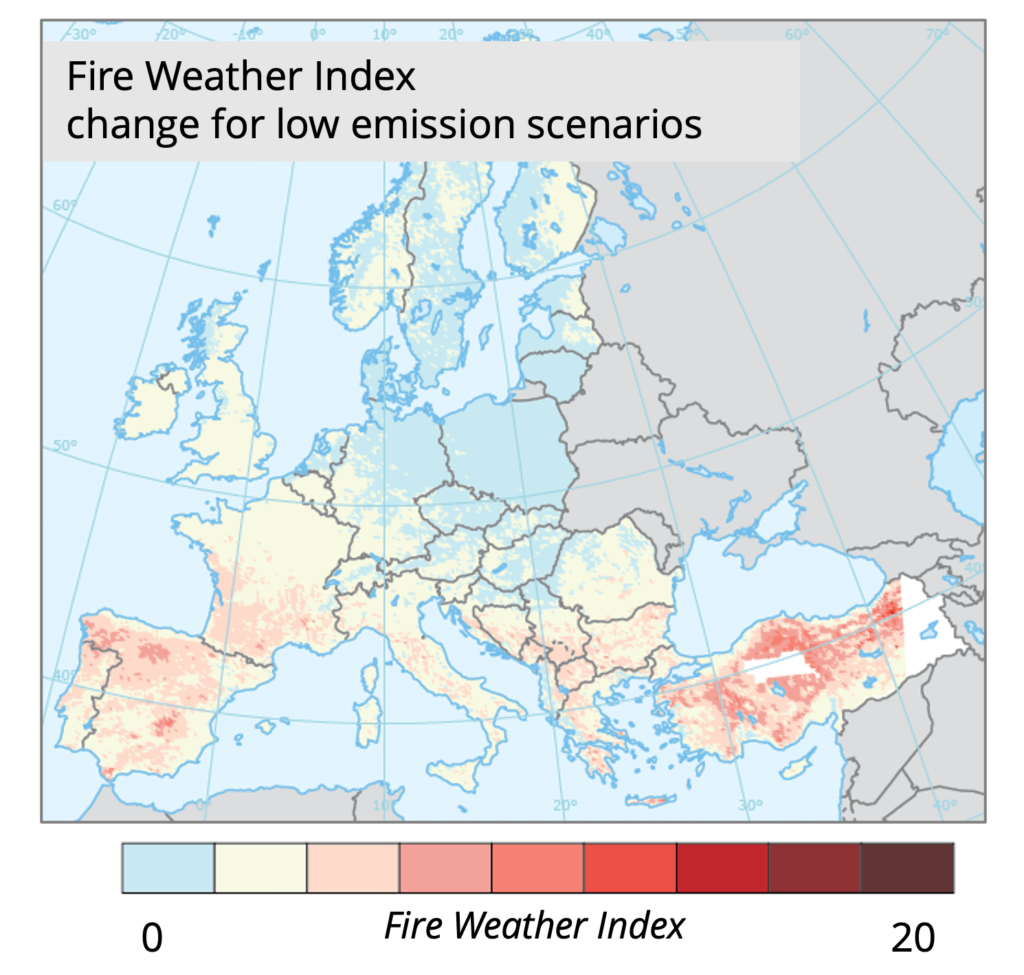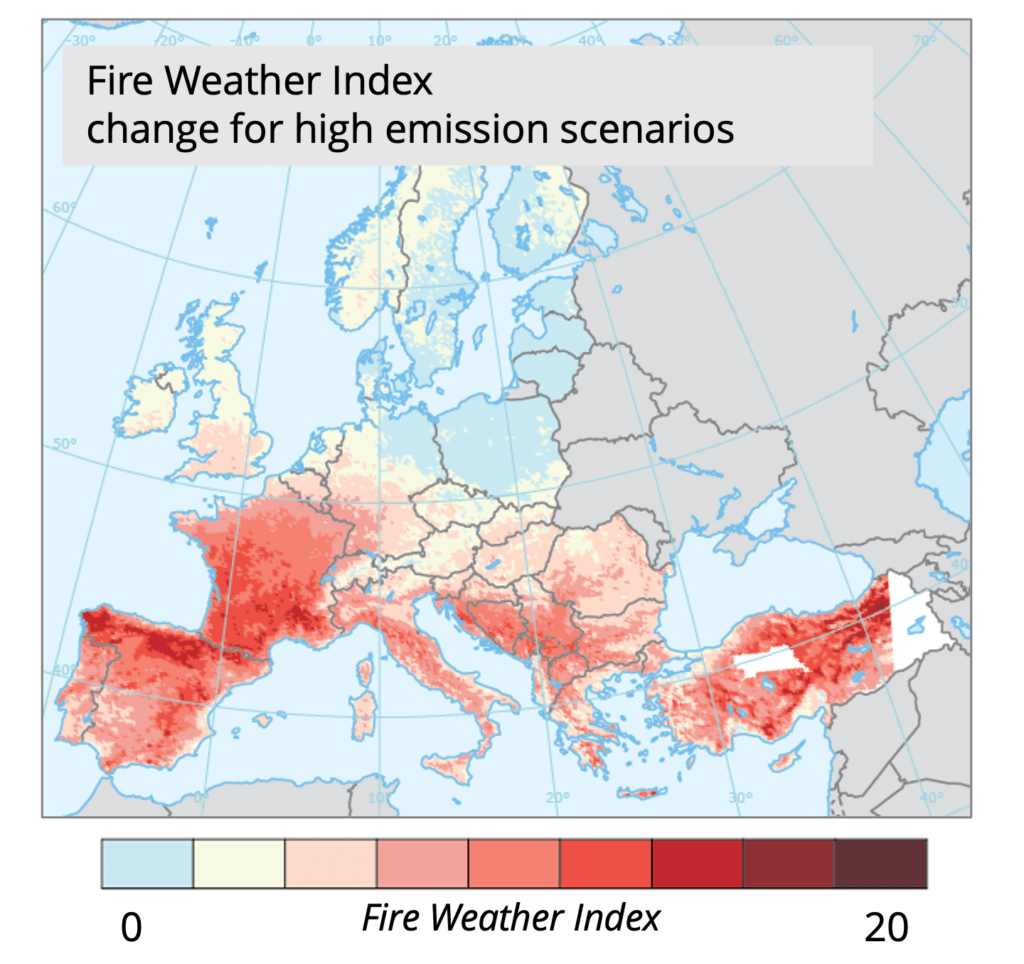The global warming connection
Scientists are studying what could be the future situation concerning the danger of wildfires and Global Warming. They agree that the increase of greenhouse gas emissions is the most relevant cause of Global Warming. In Europe, if greenhouse gas emissions will keep increasing, the areas most affected by the increase of wildfires hazard will be the Mediterranean countries, thus including the Western Balkan and Turkey area. The maps shown here represent this increase. Let’s see how.
Scientists use the fire weather index to study favorable meteorological conditions to trigger a wildfire. The higher the Index is, the more favorable the meteorological conditions to trigger a wildfire are. Global warming has a strong impact on fire weather index as it is capable to increase it.
Low greenhouse gas emissions scenarios will mostly keep the increase of global temperature below 2°C but the fire danger will increase. Such increase will be different from place to place: southern Europe will have some areas with danger much higher than today.
However, high greenhouse gas emissions scenarios will turn into very high increase fire danger everywhere in southern Europe.
In Western Balkans and Turkey we should be prepared for an increase of wildfires hazard even in case of low emission scenarios that will keep the increase of global average temperatures below 2°C.
WILDFIRES INCREASE GLOBAL WARMING
Fires, especially those lasting several weeks and burning large vegetated areas, contribute to Global Warming mostly by having an impact on the CO2 balance in the atmosphere and on the reflectivity of glaciers.
Altered Carbon balance – Wildfires impact balance between CO2 emissions and sequestration. Fires release greenhouse gasses in the atmosphere that are responsible for Global Warming. However, forests can also recover and regrow, recapturing carbon through photosynthesis. Repeated and intense fires can weaken the resilience of forests, making them less capable of sequestering carbon.
Reduced reflectivity of glaciers – Wildfires produce black carbon particles (also known as soot) that can be carried by wind and deposited on snow and ice surfaces in polar regions. This can reduce the reflectivity of these surfaces, leading to increased absorption of sunlight and localized warming and increase of ice melting.
GLOBAL WARMING INCREASES WILDFIRES
Global Warming directly affects fire key drivers, the ability of forests to regenerate and the length of fire season.
Impact on wildfires key drivers – Global Warming directly affects the meteorological conditions that favor fire. Air temperatures, atmosphere humidity and dry vegetation are the major drivers connected with global warming and affecting Wildfires.
Intensified fire behavior – Higher temperatures and drier conditions can lead to more intense and fast-moving Wildfires. Increased fire intensity can make fires more difficult to control and lead to more extensive damage.
Drier vegetation – Global Warming can increase drought conditions, resulting in drier vegetation, more prone to ignition. Such vegetation can sustain fires more readily, leading to more widespread wildfires.
Altered fire regimes – By changing climate, Global Warming, can alter the natural fire regimes of ecosystems. For example, some ecosystems that historically experienced low-intensity fires at regular intervals may now face more severe and infrequent fires due to changing climate conditions.
Increased lightning activity – Warmer temperatures of the air can lead to more convective storms, which are often associated with lightning. Increased lightning activity can result in more natural fire ignitions in forests and grasslands.
Threat to forest regeneration – Vegetation is normally capable of regenerating after the fire. However, wildfires in the Global Warming age have temperatures much higher than in the past and are capable of killing plants deep down to their roots and burning seeds that usually lay in the ground. A forest or a wilderness area burned by such fire can hardly recover. Global Warming threatens also actions for forest regeneration as new planted trees specifically need humidity to grow and regenerate the forest after the fire.
Longer fire seasons – Fire seasons are closely bound to climate. Global Warming is the major cause of the change in global climate of the Anthropogenic Era. It is expected to further aggravate fire risk, especially in the Mediterranean region, where scenarios project an increase in the number of years with high fire danger, an increase in the length of fire season and larger, more intense, and more frequent fires.


